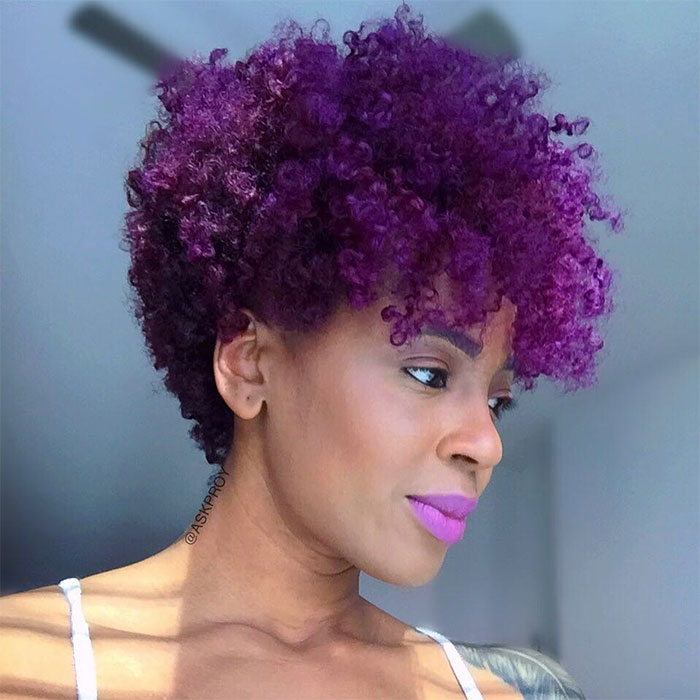
Your hair’s porosity is a great place to start if you need help finding products. It is determined by how tightly or loosely bound the cuticle is along the hair shaft. Low porosity hair is tightly bound, making it more challenging to absorb moisture, while high porosity hair is loosely bound or missing layers, making it challenging to withhold moisture. A lot of people associate high porosity hair with color-treated hair, but aside from genetics these are not the only ways someone can acquire high porosity hair.
Read more: This is Actually More Important Than Your Curl Pattern
1. Chemical processing can affect your porosity
When using permanent hair color the hair’s cuticle is being lifted and the current pigment is being altered, which by its nature is a damaging process. Dyeing your hair can transform the current porosity of your hair from low or normal porosity to high porosity. And if you naturally have high porosity hair then permanent hair color may not be the best coloring option, as high porosity hair struggles to maintain moisture so hair color and other chemical processes would only worsen this problem, and excessive dryness leads the breakage. This is why many women who color treat their hair change their regimens to incorporate products that preserve their hair color and address their protein and moisture needs. This could also apply to regular Brazilian keratin treatments.
Read more: Where to Get Color Safe Products on the Ground
2. Heat styling can affect your porosity
Thermal styling with blow-dryers, flat irons, curling wands, and other heat tools withdraw moisture from the hair. JC from The Natural Haven says: “High or prolonged heat can physically and irreversibly change the natural structure of protein.” Although you may not experience heat damage, which manifests by altering your curl pattern or excessive dryness, the process is damaging even if it is not detrimental to your length retention or does not alter the curl pattern. Excessive heat styling can take your healthy low or medium porosity hair to high porosity, which leads to brittle hair that is susceptible to breakage.
3. Just your ends can be high porosity
The ends are the oldest parts of the hair. They tend to experience the most dryness and usually result in split ends and single strand knots. This is why people encourage sealing your ends with a butter or oil to reduce the amount of moisture depletion from your hair. If you do not trim your ends regularly then you are likely to have ends that are high porosity while the length of the hair is normal to low porosity.
Read more: My Moisturizer Has Oil in It: Is Sealing Necessary?
4. Overmanipulation can affect your porosity
Each hair strand is unique. It consists of three layers: the cuticle (outer”>, cortex (middle”>, and medulla (center”>. The cuticle is estimated to have five to twelve layers at any given time and when you consider the manipulation from styling and maintenance, this could vary on each strand. Before you start thinking that you need products to address each strand of hair, that is unnecessary; this is not equivalent to caring for predominately virgin hair with a purple bang or platinum blonde ombre ends. Simply keep trying different products to see what works for you.
“If you heat treat and damage the cortex, it stays damaged. Your hair conditioner and gentle treatment can help prolong the life of the damaged hair but ultimately it is damaged and the damage will continue to progress.” – JC from The Natural Haven
All heat, chemical, and mechanical damage is cumulative. According to JC from The Natural Haven, “If you heat treat and damage the cortex, it stays damaged. Your hair conditioner and gentle treatment can help prolong the life of the damaged hair but ultimately it is damaged and the damage will continue to progress.” The severity of the damage and your hair goals will determine how you care for your hair. Some people with low to normal porosity hair never experience high porosity hair while those who experiment more should either change their products, deep condition more frequently, and incorporate protein treatments in their regimen. Don’t be afraid to explore different styling options, just be mindful of your choices and adjust your regimen accordingly.
This article was written by @askpRoy and has been updated for grammar and clarity.


